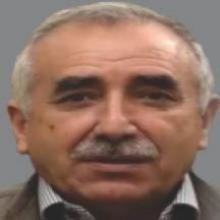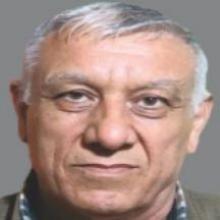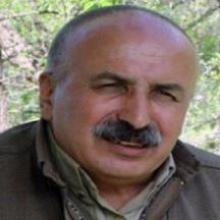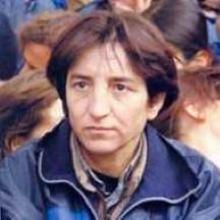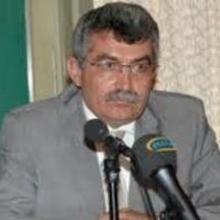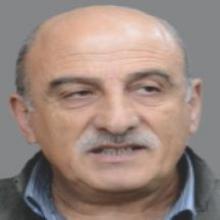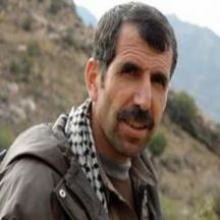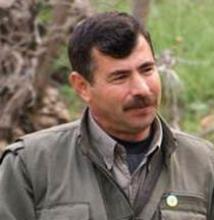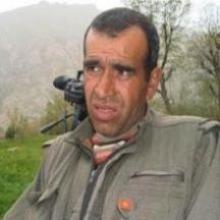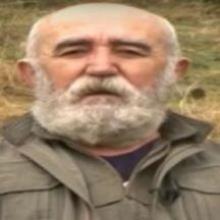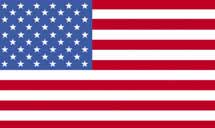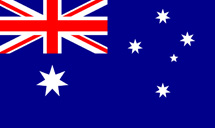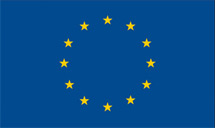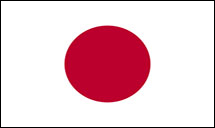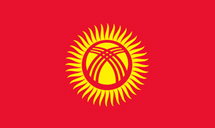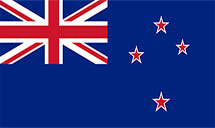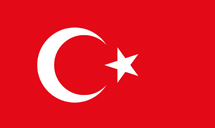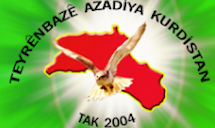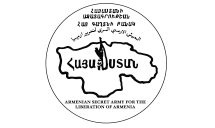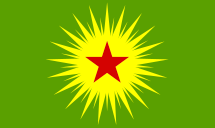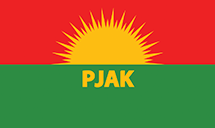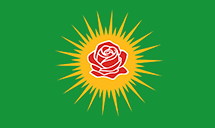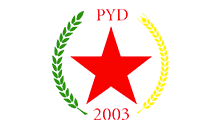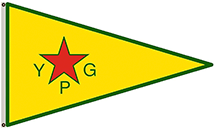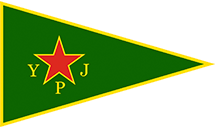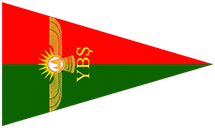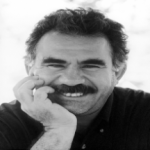Executive Summary
Abdullah Öcalan founded the Kurdistan Workers’ Party (PKK) in Turkey in 1978. While the PKK’s manifesto “…explicitly called for the creation of an independent Kurdish state,” the group embraced Marxism to justify its Kurdish-separatist war as part of a global class struggle and revolution. The PKK also utilizes violence to destroy or subsume any other Kurdish nationalist movement that opposes it or deviates from its specific goals. The PKK uses car bombs, suicide bombings, abductions, and assassinations against civilians, foreign tourists, and politicians alongside its small-arms attacks on Turkish security forces.
Öcalan, born a peasant in southeastern Turkey, propagated his ideology in the wake of the 1980 military coup in Turkey. Only a year after officially founding his party, he fled to Syria in light of Turkey’s increasing military counterinsurgency activity. Between 1979 and 1998, the Syrian government sheltered Öcalan in Damascus or in the Beka’a Valley of Lebanon.
Throughout the 1980s and 1990s, the PKK carried out an armed struggle against the Turkish state and carried out terrorist attacks on Turkish military targets and civilians domestically and abroad. The PKK “is estimated to have been responsible for the deaths of more than 30,000 Turkish security force members and civilians,” according to the U.S. State Department.
Despite his capture and incarceration in February of 1999, Abdullah Öcalan continues to significantly influence Kurdish politics. He has since published 10 books, and in 2013, he signed a peace treaty with the Turkish government on behalf of the PKK from inside his jail cell. Öcalan’s ideology has evolved during his imprisonment. His trademark brands of feminism (“jineology”), Marxist-Leninist philosophy, and Kurdish revolutionary nationalism have remained the core functions of what his followers have often referenced as “Apoism” (“apo” meaning uncle in Kurdish). Since 2004, inspired by the writings of leftist political philosopher Murray Bookchin, Öcalan has shifted his ideology toward the promotion of democratic confederalism.
The PKK has undergone numerous name changes and mergers in order to subsume all other Kurdish political and militant movements and distance itself from its violent actions. Prior to 2005, the PKK leadership consisted solely of a central committee overseen by Öcalan, with no regional chapters. In 2005, the PKK renamed itself the Kongra-Gel and compartmentalized violent activities under a newly formed military wing, People’s Defense Forces (HPG). In 2007, the PKK formed the Kurdistan Communities Union (KCK) as an umbrella organization including both the PKK and other Kurdish movements in Syria (PYD), Iraq (PÇDK), and Iran (PJAK). The formation of the KCK was an attempt by the PKK to localize Kurdish struggles within each nation while providing a mechanism that unites each movement under the dominant political ideology of the PKK.
Doctrine
Despite the PKK’s consistent adherence to Abdullah Öcalan’s ideological leadership and prioritization of Kurdish identity and Marxism-Leninism, the PKK has proven itself to be ideologically flexible.
The 1978 PKK manifesto “…explicitly called for the creation of an independent Kurdish state…” yet the PKK has more recently come to be defined by its transnational and “democratic confederalist” agenda. The PKK, like many other Kurdish organizations, has carried out attacks against the Turkish military and security forces with the long-term objective of the creation of an autonomous region in Turkey similar to the Kurdistan Region in Iraq. The PKK has also asserted additional goals, including the preservation of Kurdish culture and political rights. It pursues these goals in part by pressuring Turkey through violent attacks targeting tourists and by gaining the support of international actors.
In the late 1970s, socialist movements were extremely popular in Turkey. Öcalan saw an opportunity to align his movement with leftists, realizing that he had to disrupt social hierarchies within traditional Kurdish society in order to attract rural members to his new organization. The PKK’s founders considered themselves Marxists, but at the fifth PKK congress, members emphasized their opposition to Soviet-era socialism and vowed to modernize their socialist practices.
Öcalan remains a prominent influencer on Kurdish politics within the region even from jail. He has since published ten books, and in 2013, signed a peace treaty with the Turkish government on behalf of the PKK from inside his jail cell. Since his incarceration, his ideology has also evolved. His trademark brands of feminism (“jineology”), Marxist-Leninst philosophy, and Kurdish revolution have remained the core functions of Apoism. Since 2004, his more recent inspiration from Murray Bookchin pushed his ideology toward the promotion of democratic confederalism.
Jineology is an ideology created by Öcalan that dictates that women’s revolution against the patriarchy is an essential component of creating a free society. (“Jin” means “woman” in Kurdish.) With both jineology and his communist dogma, Öcalan sought to disrupt tribal and traditional feudal practices by breaking down gendered boundaries. The term was first referenced in his work “The Sociology of Freedom” in 2003.
In 2003, Öcalan reformulated the ideological basis of the PKK. Inspired by eco-anarchists Murray Bookchin and Janet Beihl, he advocated for a new anti-nationalist approach he referred to as “democratic confederalism.” While the PKK is often still described as a Marxist-Leninist organization, Öcalan’s new ideology diverges from traditional Leninist principles, seeking essentially decentralized communalism. Öcalan’s new doctrine, democratic confederalism, has inspired the “Rojava Experiment” in Syria, created in the wake of the Syrian revolution.
The PKK’s ideological reformation resulted in the foundation of new relationships with regional parties. The PYD, PJAK, and PÇDK share allegiance to Öcalan but vary in ideology. The Syrian Civil War provided an opportunity for Kurds in Syria to attempt to implement Öcalan’s “democratic confederalism” through the use of a decentralized canton system, whereas in the PKK, such a system of linked but semi-sovereign regions is infeasible as the organizational structure is still strictly hierarchical and built on the back of a cult of personality. Each regional branch of the KCK stresses different components of Öcalan’s doctrine.
Organizational Structure
The PKK has a rigid hierarchical structure, with Abdullah Öcalan at the top. In 2013, the PKK reconfigured its senior management. The KCK adopted a dual-gender leadership (known as Hevserok), replacing KCK head Murat Karayilan (a.k.a. Cemal) with co-chairs Cemil Bayik (a.k.a. Cuma) and Hülya Oran (a.k.a. Bese Hozat) as the head of the KCK and reassigning Karayilan to lead the Turkey-based HPG. Bayik allegedly has strong ties to Iran’s intelligence agency, VEVAK. Two Syrian Kurds, Fehman Hüseyin (a.k.a. Bahoz Erdal) and Nurettin Halef Al Muhammed (a.k.a. Nurettin Sofi), were also assigned leadership positions within the HPG. The PKK’s Executive Council is now run by Cemil Bayik, Hülya Oran, Murat Karayilan, Mustafa Karasu (a.k.a. Hüseyin Ali), Nuriye Kesbir, and Elif Pazarcik. Öcalan directed all of these leadership changes from prison.
According to the Turkish foreign ministry, the PKK largely went through two phases of organizational structure before the formation of the Kongra-Gel in 2005. The first structure was headed by the Central Executive Committee, which oversaw the Central Committee led by the Secretary General (Öcalan). Below the Central Committee, decisions were made by subcommittees and the National Liberation Front of Kurdistan (ERNK) and Kurdistan People’s Liberation Army (ARGK). The ERNK was primarily responsible for PKK operations in Europe, while the ARGK organized domestic militant activities.
In 2005, the PKK implemented its second phase of organizational structure, forming the Kongra-Gel. In this structure, the PKK was headed by Öcalan as the honorary president, the Kongra-Gel acted as the legislative body, and the KKK (Kurdish Democratic Foundation) acted as the executive branch.
The People’s Defense Forces (HPG) became the military wing of the movement, with at least 2,000 fighters as of 2013. Each HPG regional command is divided into units of eight to 20 militants. In 2013, two Syrian Kurds were assigned as HPG commander positions, representing the possible high-level ties between the YPG and the PKK. Like the YPG, the HPG also has an all-female unit called the Free Women’s Units (YJA STAR). Younger women primarily serve as militants, while older women serve in various front organizations.
In the fifth congress of the Kongra-Gel in 2007, the PKK moved to adopt a new organizational structure, with the KCK as the transnational head and the PKK as Turkey’s regional branch. The KCK serves as an umbrella organization including the PKK and other Kurdish movements in Syria (PYD), Iraq (PÇDK), and Iran (PJAK). The KCK has judicial, legislative, and executive bodies, as well as the following societal committees: Social Committee, Public Health Committee, Language and Education Committee, Laborer Committee, Committee for Solidarity with the Relatives of Martyrs and with War Veterans, Youth Committee, Yekiniya Jinen Azad (YJA or Union for Free Women) Committee, and Free Citizenship Coordination Committee. The legislative body, the Kongra-Gel, has 300 representatives elected every two years. However, the KCK’s activities are dictated by the PKK’s legislative council in Iraq. The U.S. designation of the PKK as a foreign terrorist organization treats the group as synonymous with the Kongra-Gel.
The Patriotic Revolutionary Youth Movement (YDG-H) is the urban-based youth unit of the PKK. In 2015, the YDG-H was allegedly incorporated into the PKK as part of the Civilian Protection Units (YBS). That same year, the YDG-H attacked Turkish local security forces and effectively initiated an insurgency in Kurdish city centers across the southeast such as Diyarbakir, Nusaybin, and Cizre. The YDG-H has described itself as “semi-independent” and PKK leadership has sometimes denied its direct connection to that unit.
The YBS is a militia group affiliated with the PKK formed in 2015 and active throughout 2016 in the insurgency in the southeast. Members include both rural militants and the more urban YDG-H “youth division.”
Financing
In 2015, Osman Öcalan, brother to Abdullah Öcalan, claimed the PKK earns $50 million in annual income from taxing smugglers—including drug smugglers—and merchants. In its early years, Osman Öcalan stated, the PKK received support from the Syrian regime, Syrian groups in Lebanon, the Lebanon Communist Party, various Palestinian organizations, and the Kurdish diaspora community in Germany. In the 1980s the PKK was able to raise significant funds in Europe. After 1995, the PKK set up several customs border checkpoints between Iraq, Iran, and Turkey that raised $3 million, according to Osman Öcalan. According to Turkish government-run think tanks and newspapers, the PKK has also been supported by Greece, Russia, Iran, Iraq, and Syria.
The PKK also reportedly ran its own drug-trafficking operations and extorted money from illicit drug operations in the area. Before the 1990s the PKK extorted money from heroin traffickers and cannabis cultivators in Turkey and in northern Iran and Iraq. From the 1990s onward, the PKK became more directly involved in illicit drug activity and ingrained itself into the global drug network. The PKK began producing and delivering drugs, conducting money laundering activities, and assassinating rivals. This led to semi-regular clashes in 1992 and 1993 with Hezbollah in southeastern Turkey, where the latter was also involved in the drug market. The PKK has also been known to use illegal taxation and extortion to collect money, under the guise of “donations,” from its members and those living under the indirect control of the group.
Recruitment
Members began recruiting aggressively for the “Kurdistan Revolutionaries,” as they called themselves, in 1975. The Turkish government’s heavy-handed repression of Kurdish culture, arbitrary detention, torture, etc., and extrajudicial killings of Kurds in the southeast, were powerful motivators for PKK recruitment. Prestige, financial compensation, and kinship appear to be less important elements of recruitment. Local Kurds are faced with the option of joining the Turkish government-supported village-guard system or the PKK. Village guards enjoy a steady paycheck, access to weapons, and potentially a share of proceeds from illicit activities, but risk death at the PKK’s hands.
Transnational Movement:
During the PKK insurgency of the 1980s and 1990s, according to analyst Aliza Marcus, the Syrian government “...did not block the flow of illegal refugees from Turkey, did not make trouble for Kurdish militants setting up house in Syria, and did not impede traffic back and forth to Lebanon.” Abdullah Öcalan spent most of the period between 1984 and 1999 in Damascus, and at least 130 Syrian Kurds had joined the PKK at the Helwe camp in Lebanon as early as 1987. Syrian Kurds were often supportive of the PKK. Furthermore, in late 1991 an Iraqi Kurdish leader claimed Saddam Hussein was arming the PKK in a deal to prevent Turkish food and supplies from reaching the Kurdish region of northern Iraq through Turkey. The PKK has long maintained headquarters in northern Iraq, particularly the Qandil mountains, from which it trains recruits and conducts military operations against both the Turkish government and the regional Kurdish government led by the KDP.
Child Soldiers:
Human Rights Watch claims the PKK has forcibly recruited children in Iraq for the HPG (People’s Defense Forces) and the PKK-affiliated Yezidi Resistance Units (YBS). In 2010, UNICEF also condemned the PKK’s use of child soldiers. In 1995, 17-year-old PKK recruit Leyla Kaplan carried out a suicide attack against Turkish police in Adana, prior to which another PKK female fighter, Turkan Adiyaman, was shot in front of Kaplan for refusing to “volunteer” for a suicide bombing. Rather than promising a rewarding afterlife, the mostly secular PKK cultivated a cult of personality around Abdullah Öcalan, as well as a refuge from poverty and some restrictive gender norms.
A 2001 Amnesty International report claimed the PKK had “systematically recruited children,” including in Swedish schools, and formed regiments entirely composed of children. In 2013, a PKK commander signed a commitment to take measures to “limit” the use of children in insurgent activities. However, the PKK continues to recruit child soldiers. A 2016 Human Rights Watch report describes PKK recruitment and training in Iraq and notes that even if children aren’t actively engaged in combat, they are endangered by being trained in areas targeted by Turkish airstrikes.
The PKK-affiliated YPG has similarly been accused of using child soldiers in Syria. Human Rights Watch first condemned the YPG’s use of child soldiers in 2014 and later documented the spike of child-soldier recruitment in 2017 and continued use in 2018. In 2018, following the culmination of most of their anti-ISIS campaigns, the YPG released a press statement that declared that the SDF would remove all minors from military positions.
Women:
The PKK has incorporated women into the organization since its founding, with their influence and numbers growing over time. According to Turkish newspaper Cumhuriyet, in the early 1990s, 30 percent of PKK militants were women. The PKK recruited women living in western Turkish cities and in tribal areas where gender roles restricted their opportunities and freedoms, as well as migrants to European countries after 1960. Initially, many women were forcibly recruited, but in other cases women were convinced by promises of freedom. Some women were indoctrinated at a young age and sent to avenge killed relatives, while others fled unwanted marriages. In 2013, the PKK instituted a system of male and female co-chairs of the KCK and appointed three women to the KCK’s six-person General Council.
Training
The PKK trains militants in both small- and large-scale camps located primarily in the mountains in Iraq and Turkey. The PKK allegedly trains PKK affiliates from across the region who often go on to carry out attacks or other PKK activities in their home countries. The PKK emphasizes ideological training, indoctrinating recruits with Abdullah Öcalan’s ideology and the PKK’s interpretation of Kurdish history and culture. Women comprise their own regiments and are separated from men.
The latest Turkish operation in Iraq (Operation Claw) has targeted PKK camps and high-ranking commanders, as many PKK militants had previously moved their operations abroad during the previous ceasefire. The PKK has also been accused of having training camps in Turkey, Europe, Iraq, Lebanon, Syria, and the Palestinian territories. As early as 1979, Öcalan sent recruits to camps in Lebanon for joint training with the Democratic Front for the Liberation of Palestine (DFLP). From 1980 to 1982, PKK militants trained 300 fighters in Lebanon who were then mobilized in Turkey.
Many PKK bases and training camps operate out of the Qandil Mountains on the borders with Iran and Iraq. The mountains offer a safe haven for PKK activities, with difficult terrain and relative autonomy from the Iraqi government. As of 2006 these camps were described by a Jamestown Foundation report as low-tech and modest in size, weaponry, and funding. The PKK has often taken direct control over smaller villages in the region and recruits frequently flow to and from Turkey, Iran, and Iraq. Murat Karayilan is the primary commander of this region.
During the 1980s and early 1990s, Abdullah Öcalan set up PKK training camps in Syria with the support and funding of Syrian dictator Hafez al-Assad. The most prominent PKK training camp at that time was located in Lebanon’s Beka’a Valley, where militants were trained for about three months, living alongside other recruits in groups of 15 in tents or small buildings. In 1991, Öcalan was pictured visiting the Beka’a camps.
YPG martyrdom reports also acknowledge the deaths of large numbers of Kurdish militants from Turkey, indicating that there is still a considerable flow population flow across the Syria-Turkey border.
Also Known As:
- Freedom and Democracy Congress of Kurdistan
- Hezan Parastina Gel
- Kongra-Gel (KGK)
- Kongra Gele Kurdistan
- Kongreya Azadi u Demokrasya Kurdistan (KADEK)
- Kurdistan Freedom Falcons
- Kurdistan Freedom Brigade
- Kurdistan Freedom Hawks
|
- Kurdistan Halk Kongresi (Kurdistan People’s Congress)
- Kurdish Liberation Hawks
- Kurdistan Labor Party
- Kurdistan Ozgurluk Sahinleri
- Kurdistan People’s Congress
- Partiya Karkeren Kurdistan
- People’s Defense Force (HPG)
- Teyrbazên Azadiya Kurdistan
|
